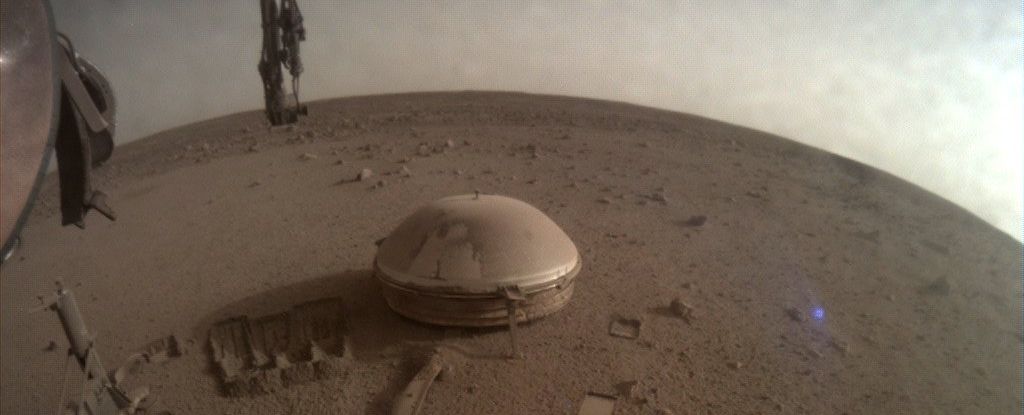Products You May Like
Looking over the dusty expanse of a Martian lava plain, some 87 million kilometers away, NASA’s Mars Insight lander may have just sent home its last view of the red planet.
Since it commenced data collection early in 2019, the lander has revolutionized our understanding of the Martian interior. Now, its solar panels are coated with dust, its power is running low, and it’s only a matter of time before Mars InSight switches off for good.
We knew it was coming; NASA announced back in May that InSight’s science operations were likely to cease by the end of the year. But now the harsh reality is coming to pass, and we’ll have to say goodbye to yet another Mars pioneer.
In a tweet, NASA revealed what is probably going to be the last image we see from InSight, as its power runs too low for large data transmissions.
My power’s really low, so this may be the last image I can send. Don’t worry about me though: my time here has been both productive and serene. If I can keep talking to my mission team, I will – but I’ll be signing off here soon. Thanks for staying with me. pic.twitter.com/wkYKww15kQ
— NASA InSight (@NASAInSight) December 19, 2022
Unlike other robotic laboratories exploring Mars, such as Curiosity and Perseverance, InSight is not a rover. The lander, once deployed, sat in one spot on Mars, at the boundary between the cratered southern highlands and the smoother northern lowlands. There, equipped with a set of instruments designed to monitor internal planetary activity, it discovered that Mars is not nearly as dead as we had long assumed.
Rather, the red planet’s interior rumbles with seismic and possibly volcanic activity. This is incredible information for a number of reasons.
Firstly, all that internal activity produces seismic acoustic waves that bounce around inside Mars, giving seismic experts the information they needed to create the first ever detailed map of Mars’ internal structure.
Its instruments are also sensitive enough to detect meteorites hitting Mars, which scientists tracked to fresh craters. This information can help scientists better understand the impact history of Mars – a history that can help explain some of the planet’s geological and atmospheric characteristics.
And volcanic activity has some incredible implications. Mars is too cold and its atmosphere too thin for liquid water to pool on its surface, which means that life as we know it would not be able to survive there.
But if there’s volcanic activity inside Mars, that internal heating might keep subsurface lakes from freezing solid, enabling an environment in which microbial life could theoretically survive.
So, while it was only operational for less than four years, InSight has shown us the possibility of a Mars very different from the barren, frozen dustball it appears to be on the surface.
NASA’s Opportunity rover experienced the same fate in 2019, when the thick layer of dust coating its solar panels couldn’t be shaken loose.
Fortunately, we don’t have to worry about Curiosity and Perseverance: both rovers are powered by the radioactive decay of plutonium, and will power on until their generators run down, no matter how much Mars dust coats their bodies.
InSight has not quite been switched off yet. NASA will continue to maintain contact for as long as possible. But the day is fast approaching when the lander will join the retired spacecraft and robotic explorers that came before, in the desolate space probe graveyard of Mars.
